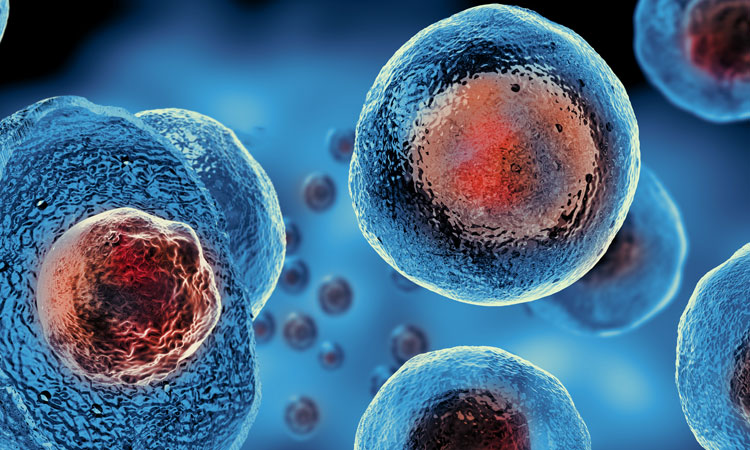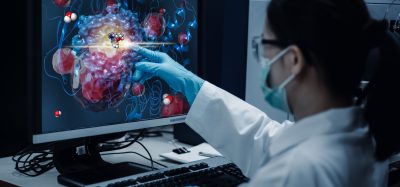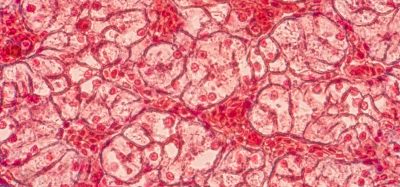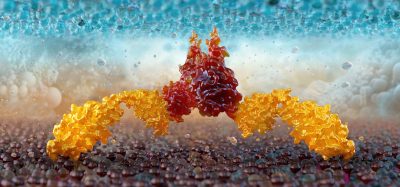Decoding cell therapy variants with Dr Andy Bader
Posted: 1 September 2023 | Taylor Mixides (Drug Target Review) | No comments yet
The field of cell therapy has emerged as a beacon of hope, promising transformative treatments for various diseases. Diving into the intricacies of this domain, this exclusive interview explores the distinctions between two key approaches – autologous and allogeneic cell therapies. We look at the nuances of cell sourcing, preclinical challenges, and clinical possibilities, guided by the expertise of Dr Andreas Bader, a distinguished figure in the industry with a profound track record in oncology drug discovery and strategic leadership.


Could you explain the fundamental distinction between autologous and allogeneic cell therapies and how they differ in terms of cell sourcing and application?
Yes, basically autologous immune cell therapy involves the grafting of a patient’s own immune cells. During this approach, immune cells are collected from a patient and expanded ex vivo to produce cells in large numbers that are ideally healthy and highly functional. During this expansion, cells can also be genetically engineered – for instance with a chimeric receptor such as Triumvira’s proprietary T cell antigen coupler (TAC) – to equip immune cells with additional properties that will increase their therapeutic activity. Then, cells are infused back to that same patient.
In contrast, an allogeneic cell therapy involves the grafting of foreign immune cells that come from a different donor with the expectation that they are tolerable, i.e. they are free of GvH activity. However, the cell source and strategy for making allo immune therapies can substantially vary. For instance, the cell source can come directly from a healthy donor or, alternatively, can be produced in laboratories using induced pluripotent stem cells (iPSCs). And while both of these approaches differ fundamentally in the manufacturing process, a common requirement is the generation of cell banks that can yield enough cells to dose 100s of patients and more.
What are the primary advantages of autologous cell therapy development, and how do these differ from the advantages of allogeneic approaches?
There are pros and cons to each. Key advantages to the autologous approach are related to the fact that patients are getting their own cells back. This means that they are free of GvHD and hypothetically are free of graft rejection in favour of immune cell persistence and efficacy. Having said that, insufficient persistence may still occur and can result from general engraftment challenges that is due to low dose levels, absent lymphodepletion, immunogenicity directed against the novel chimeric receptor, or, lastly, detrimental effects of the engineered chimeric receptor. An example of the latter is CAR-induced tonic signalling which can drive engineered cells to premature exhaustion and essentially dampens the therapeutic potential of transferred immune cells. Our TAC technology was intentionally built to overcome challenges like these and leads to cells with largely improved quality attributes. These translate to outstanding durable anti-tumour responses in various preclinical models.
Main drawbacks of the autologous approach are a 3+ weeks vein-to-vein time, which is not allowable for certain diseases, and the potentially low quality of the source material as a result of prior treatments, comorbidities, or individual manufacturing issues. Considering it takes many steps to make such a personalized cell product, shortening the vein-to-vein time without compromising on quality is paramount. At Triumvira, we are using the Cocoon® Platform (provided by Lonza), which is a fully closed and automated bioreactor that was specifically designed to reduce the handling of specimens and to streamline culturing conditions with the goal of reducing manufacturing failures and ensure consistent product quality. We established this system before the launch of a Phase I/II TAC01-HER2 clinical study to treat patients with HER2-positive solid tumours.
Having treated more than 19 subjects, we are pleased to report a 100 percent manufacturing success rate. Importantly, our manufacturing platform yields highly potent and functional TAC T cells. A nonclinical comparison of TAC T products generated from healthy donors and solid tumour patients with up to 6 prior lines of therapy showed that patient-derived TAC T products were no less efficacious than those derived from healthy donors. This truly highlights the excellence of our manufacturing process (Triumvira 2023 AACR poster) and aligns with interesting responses we have been seeing in our clinical trial (presented at ASCO 2023). Finally, an added benefit of the Cocoon® is its small and modular set-up which is expected to drastically reduce the eventual manufacturing costs, another key issue in cell therapy.
An advantage and key difference of the allogeneic approach is the ability to create product well in advance, such that it is available “off the shelf”. This permits treatment immediately after diagnosis which is particularly important for fast-progressing patients with deadly diseases. The choice of the ultimate cell type is critical as it not only needs to be safe but also efficacious. Given the many setbacks in our industry with various allogeneic approaches, for instance, due to safety concerns around gene editing of ab T cells, we decided at Triumvira to develop allogeneic TAC T cells using gd T cells. These gd T cells are naturally free of alloreactivity and, importantly, provide additional and unique cellular functions – not shared with other immune, e.g. ab T cells – that we can leverage therapeutically. This is why we view gd T cells as an exciting and promising cell source to combat cancer.
On a final note I just wanted to mention that we always acknowledged the differences between auto and allo and that either one might be the most effective depending on the patient’s situation and disease. This is why Triumvira is pursuing both approaches and not just one.
Could you elaborate on how the sourcing and handling of cells for preclinical research differ between autologous and allogeneic therapies, and how these variances impact the overall development timeline?
Yes, the path to an IND is quite different between the two approaches. For the preclinical development of autologous products, we source immune cells from healthy donors for TAC T production. These products are used in preclinical pharmacology and toxicology studies to satisfy a regulatory submission. For allo, you will need to establish your cell banks first, and – along with it – develop a manufacturing process that provides sufficient drug product for early clinical studies. Much of the preclinical characterization will need to be done with the actual drug product to satisfy an IND submission… hence, this approach is much more similar to traditional drug development that requires the supply of drug product beforehand. Naturally, this has an impact on timelines with the allo approach taking significantly longer. On the upside, however, once you have your drug supply ready, you can use it right away across many patients.
In terms of target validation and efficacy assessment during preclinical studies, how do autologous and allogeneic cell therapies exhibit differences, and what factors must researchers consider to ensure accurate results?
The differences depend on the strategy of your autologous and allogeneic approach. For instance, if autologous and allogeneic products are based on the same cell type, then one might expect that the pharmacological parameters may be and should be quite similar. This, of course, is subject to change depending on differences in genetic modifications and/or manufacturing procedures. If cell types differ between autologous and allogeneic products, then pharmacological parameters can vary significantly. However, this does not always predict whether one is better than the other, assuming that the actual clinical application is tailored to each product. What matters most at the end of the day are efficacy and safety. Therefore, preclinical parameters related to efficacy and safety are uniformly applicable.
What specific safety considerations come into play during the preclinical drug discovery stage for autologous versus allogeneic cell therapies, particularly in relation to immunogenicity and off-target effects?
That’s a good question. It depends on how the therapy is ultimately practiced, e.g. dose level, dose regimen, therapeutic window. And these parameters trace back to the mechanism of action, cell type, and genetic engineering strategy. In general, many of the safety parameters apply the same for auto and allo. Any foreign element, such as a chimeric receptor in an autologous product, a genetic modification altering an endogenous gene, or a foreign cell used as allo, may be immunogenic, can elicit off-target effects and behave in a way that leads to safety issues. This is why the KISS principle is sometimes not a bad idea. Too many alterations in your cell product may not only add new features to cells but can also inadvertently disrupt others. Oftentimes, these other changes are hard to model, predict and control. Keeping it simple and playing to the strength of your effector cell is highly advisable. For instance, on a transcriptomic level our TAC T cells are very similar to normal T cells with the exception that TAC T cells are directed toward a specific tumor antigen. In contrast, we see many transcriptional changes in CAR T cells. Similarly, we use gd T cells which naturally have no alloreactivity. This means there is no need for gene editing which has created safety issues for other technologies.
Looking ahead, how might advancements in preclinical techniques and technologies address the unique challenges posed by autologous and allogeneic cell therapy development, ultimately enhancing the translation of promising therapies from the lab to the clinic?
The translation from the preclinical into the clinical stage has always been a major hurdle in drug development and is no different for autologous and allogeneic cell therapy. In some ways, the preclinical evaluation of cell therapy is more challenging compared to other modalities as its mechanism of action is highly complex and typically involves both the graft and the host. Therefore, preclinical models will need to cater to these mechanisms and have become increasingly more sophisticated. In oncology, this involves models that capture multiple components of an endogenous immune system and tumor microenvironment. Ultimately, however, we can only learn from clinical experience. Given that immune cells are a natural gatekeeper of tumor cells and that much of the clinical responses across multiple modalities are immune-related, cell therapy – whether it is autologous or allogeneic – has huge potential to generate more effective medicines.
Author Bio:


Dr Andreas Bader joined Triumvira in 2018. Dr Bader is a seasoned biotech executive with more than 20 years of experience in oncology drug discovery and development, and business and research strategies. Previously, Dr. Bader acted as Co-Founder and CEO of Orros Biotherapeutics LLC, and as a scientific Co-Founder of Mirna Therapeutics, Inc., where he held multiple leading positions in R&D and led research programs from discovery to the completion of Phase 1 clinical trial. Prior to Mirna, Dr. Bader functioned as the Scientific Lead of the microRNA therapeutics program at Asuragen, Inc. Dr. Bader completed his post-doctoral training at The Scripps Research Institute, La Jolla, California, received his PhD in Biochemistry and his MSc degree in Biology from the University of Innsbruck, Austria.
Related topics
Cell Therapy
Related organisations
Triumvira
Related people
Dr Andreas Bader (Triumvira)








